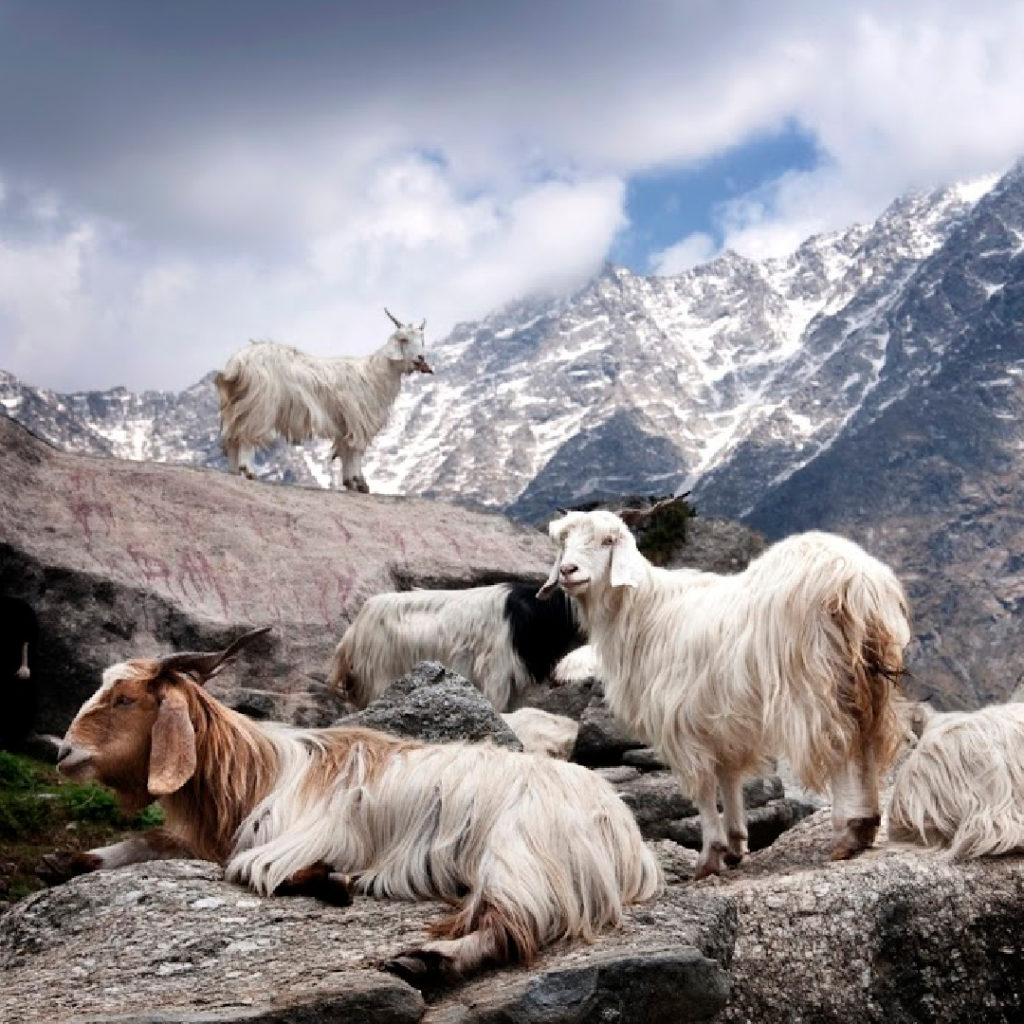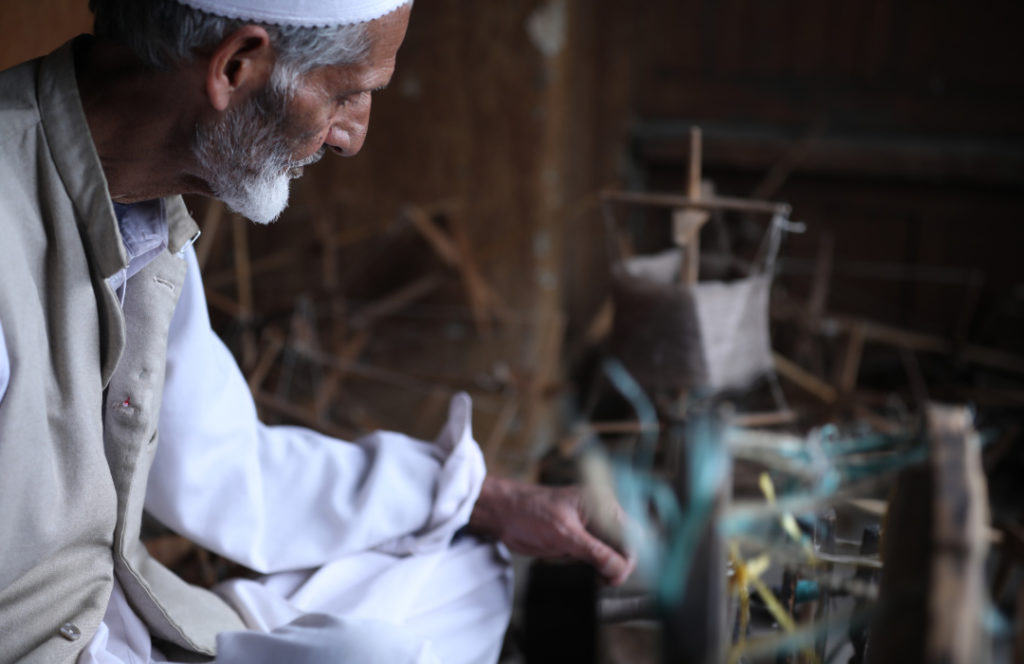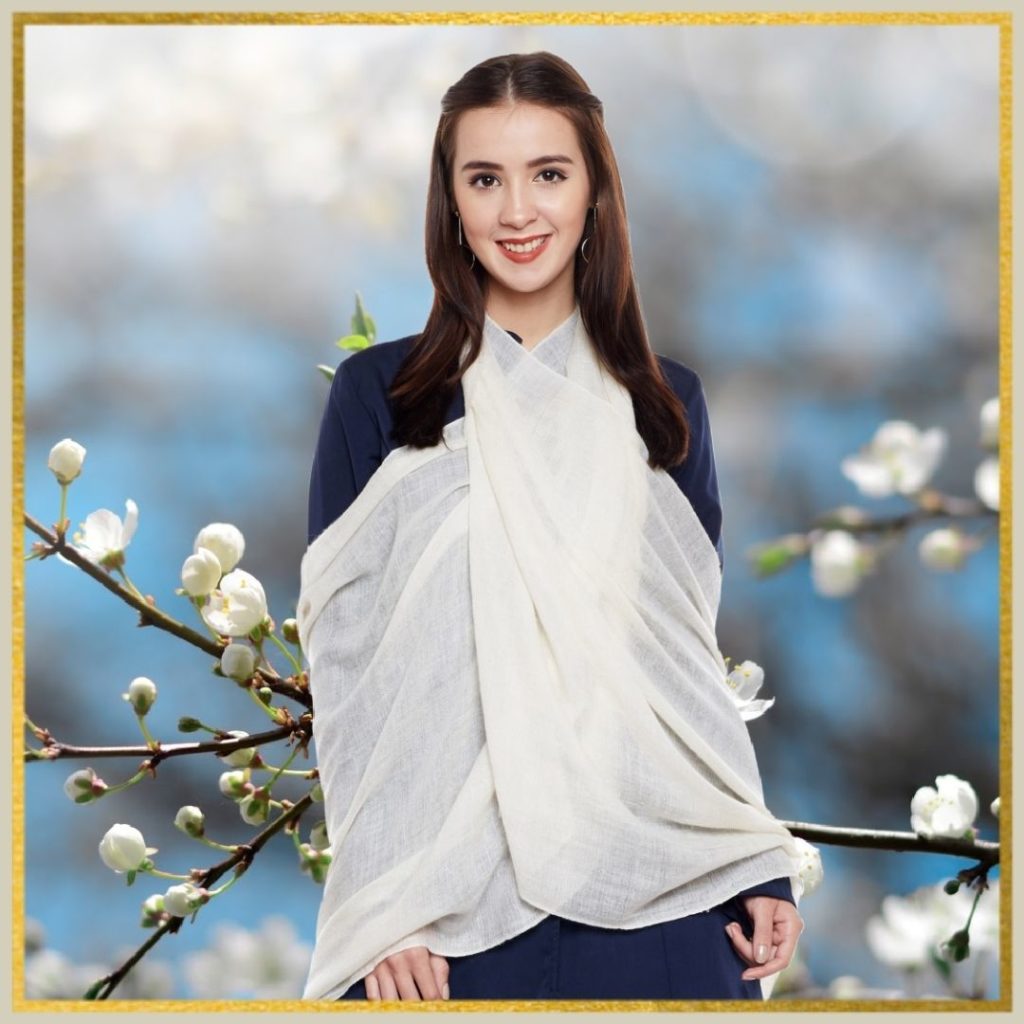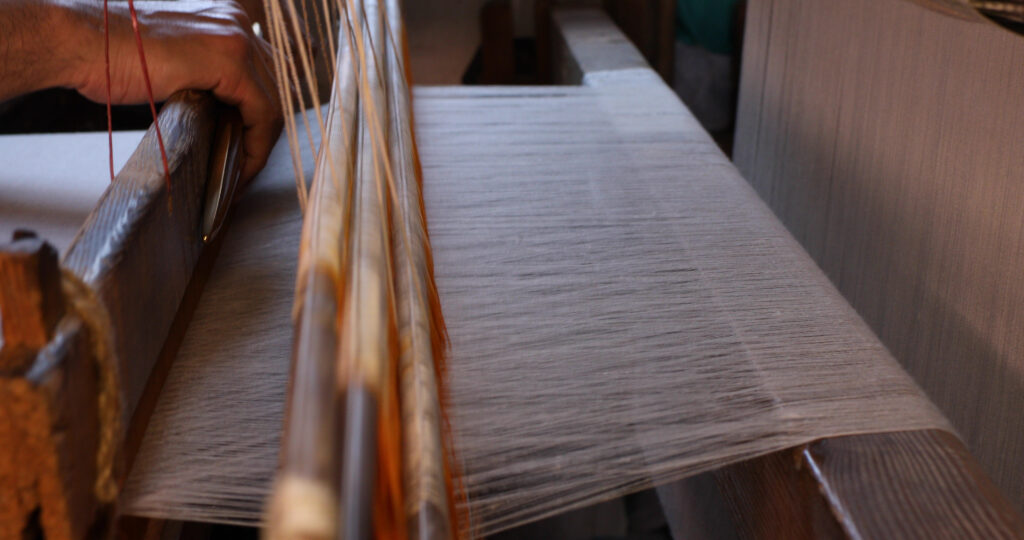Ladakh - Northern India - in the state of Jammu and Kashmir is world-renowned for its high mountain ranges, untouched natural beauty, and the remote cultural practices that the locals follow. It is a land of high passes, and as such is sparsely populated. The people - who are mostly Buddhist nomads - follow a simple lifestyle, and aren't affected by fashion fads and the changing world beyond the borders of their basic ecosystem. It is only the people and their animals who are the company to each other. Rearing animals is the most common occupation of the people, as the environment-induced rugged terrains do not allow farming. Amongst the animals, sheep, yaks, ibex, and goats are most popular and apparent. But the most famous animal living in this area is the Changthangi goat or the Cashmere goat.
The Cashmere Goat
The 'Changthangi goat', also known as the Changpa, pashmina, or Cashmere goat is found in the Changthang area of Ladakh in Kashmir, North India. However, it also inhibits the regions around Tibet, Nepal, and Burma. This breed of goats is mainly raised for its ultra-soft cashmere wool production. Once this Cashmere wool is handwoven, it turns into the world-famous Pashmina shawls. Changthangi goat grows a thick, warm undercoat that naturally grows over its body as a defense against freezing temperatures that Ladakh experiences in winters.
This fleece is exceptionally warm, and comfortable, and it keeps the goat warm all winter long. The fibre is extremely lightweight and fine too. A full Cashmere wrap weighs just around 300 grams, with its spun yarn measuring between 12-15 microns. Wraps or sweaters made from Cashmere are cherished worldwide and sell at a very high price as it is considered as the finest of its kind.
Also read: The Trail of India’s Cashmere Goat Men
Physical features of the goat
Changthangi goat is a medium-sized animal and a domestic breed of goats. They are usually white in colour, but can be also seen in black, grey, ash, and brown. Both males (called Buck) and females (called Doe) have long twisted horns. The average bodyweight of the buck is around 30 kg, and the Doe weighs around 26 kg. Changthangi goats are quite active, cautious, and not lazy or placid. These are physically hardy and strong animals. They are raised by nomads, by moving from one place to the other looking for grasslands for them to feed upon.

The temperature in this area plunges to as low as minus 40° C. As such it is just the Cashmere wool that protects these animals from the cold that can otherwise freeze them to death. The production varies from goat to goat, ranging from 70 to 500 grams per animal. This fleece is procured by combing the same of its body using specialized tools and techniques.
The goats give birth to younger ones once a year and produce just one calf each time they deliver. A mature doe yields 200 to 300 ml milk per day once its calves are weaned. It is this milk that survives the Nomadic tribe of Changpa, besides other things that they consume.
Processing of the fine wool
Even though Ladakh is blessed with Cashmere, the processing of the same is done in Kashmir. Kashmir is a place that brims with art and its artisans. Cashmere processing artisans are the most skilled and experienced craftsmen here in the valley. As soon as Cashmere comes from Ladakh, its cleaning starts.

Clean Cashmere wool is handed over to womenfolk, who come from remote, underprivileged areas of the valley. They sit in groups and start spinning the clean lumps of wool. This process is done over a spinning wheel made of wood. This produces yarn, which has a diameter of 12-15 microns only. Note that the average human hair has a diameter of 50 microns.
Spun yarn is collected together, and sent to get hand woven. Men await at handloom units and mount the fine, delicate yarn over the heddles of the handloom with exceptional perfection. Hand weaving Cashmere yarn takes about 3 to 4 days, and a Pashmina shawl is prepared after meticulous, painstaking efforts and high skill. What colour is Cashmere going to be will be decided at this step. The shawl will be dyed according to requirement.
These shawls are later embroidered with hand, into breathtaking patterns, and the world watches these mesmerizing pieces of art unfold.
Also read: 5 types of hand embroideries for Kashmiri shawls
What colour is Cashmere?

What is Cashmere colour originally will depend on the colour of the goat. Natural Cashmere is found in just a few shades. White, black, Ask, brown, or tanned shades are naturally acquired from the goat itself. However, what is Cashmere coloured in depends on whatever the requirement is. We have seen Cashmere wraps in pastel blues, greens, and browns, to bright yellows, pinks, and reds. Nude shades, as well as bright shades, are available in Cashmere. If a fabric has a darker colour naturally, and the customer needs a lighter one, it is treated with bleach to make it conform to the choice. Nevertheless, women’s preferences keep changing and they would never like solid pieces to be worn forever. Luckily Cashmere takes in prints, patterns, and ombre styles, which have to be dyed more than once. But since wool is versatile, it can be moulded into any trending style.
Purity of Cashmere

More than anything, purity has to be the number one factor you check when buying a Cashmere. Many dealers offer machine-made or blended Cashmere products, which do not serve the purpose of buying Cashmere in the first place. Many of them sell sheep wool products and claim those to be pure Cashmere products. As such it becomes really difficult for a customer to differentiate between false and pure pieces.
Save yourself from buying a fake piece. Always buy from an authentic vendor. Make sure your vendor presents to you a certificate of purity for every product you take. Or else check for the geographical indication (GI) mark somewhere over the base which proves the product’s authenticity and purity.
Cashmere is a lifetime investment. If cared about properly, it lasts even up to 30 years. But that is the case for only pure Cashmere. Fake Cashmere products will wither within a few years of use. Be careful while shopping, and get your already bought pieces checked too.
Also read: How can you tell if a Pashmina is real?